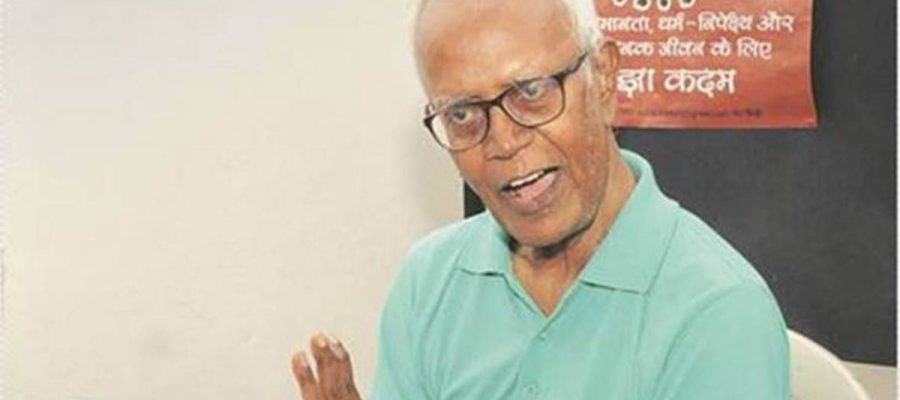That our criminal justice system is based on presuming innocence appears to be an empty reassurance, when prima facie truth suffices for years of incarceration under the anti-terror laws.
Where to begin apportioning blame for Father Stan Swamy’s death? How to fix accountability for actions, both institutional and individual, for guilt that is both historical and specific to today?
1967 is a good place to start. The Unlawful Activities (Prevention) Act (UAPA), as enacted then, contained none of the anti-terror provisions that Swamy was booked under, nor the harsh bail restrictions that denied his release. These owe their origins to the Terrorist and Disruptive Activities Act, 1985 (TADA), a law that was set to lapse in two years because the government itself admitted that such extraordinary laws should not be made permanent. TADA was renewed till 1995, allowed to lapse amidst criticisms of its misuse, and yet its provisions were largely revived in the Prevention of Terrorism Act, 2002 (POTA). In 2004, the government let POTA lapse, while giving its provisions a permanent home in an amended UAPA. In 2008, government leaders, many of whom today demand accountability for Swamy’s death as part of the Opposition, introduced an unprecedented bail restriction into the UAPA. No accused could be granted bail if on a perusal of the case diary or chargesheet, the court could reasonably believe that the accusations against her were prima facie true.
And so, on October 8, 2020, the NIA arrested Swamy, without bothering to pretend that it needed police custody to interrogate him. It didn’t matter that Swamy had cooperated with the investigation; that there were no reasonable apprehensions that he would flee or tamper with evidence; that his Parkinson’s was so advanced he could not sign his vakalatnama. The NIA filed its first supplementary chargesheet arraigning Swamy in the Bhima-Koregaon case on October 9 and his remand to jail was but automatic. He was accused of links to front organisations of the banned CPI (Maoist), designated “terrorist” under the UAPA. All that is needed to ban an organisation as “terrorist” is the central government’s belief that it is involved in terrorism. There is no judicial remedy against this ban, only an application to a government-constituted committee, the details of whose functioning no RTI application has been able to elicit.

In May, Swamy complained to the Bombay High Court of worsening Parkinson’s tremors, hearing loss, intense lumbar and abdominal pain. The jail responded that he had “a stable pumping heart and good circulation of blood.” Two days later, Swamy pleaded for medical bail. The HC ignored this, offering a choice only between treatment at a state or private hospital. A lawyer representing Swamy’s co-accused wrote an op-ed criticising this. The court chided her, asking why lawyers came to courts if they didn’t have faith in them. Swamy claimed he was not given his custodial medical reports and had to rely on older ones. The NIA claimed that the medical documents he filed were not conclusive proof of his “alleged Parkinson disease” and were old. Swamy developed Covid symptoms in prison but was tested only after being shifted to a private hospital at his expense. By then, it was too late.
What led to Swamy’s death is the normalised routinised evil of bureaucracy documented by Hannah Arendt and terrifying in its banality — of cogs in a machinery encompassing the police, prisons and courts that never strayed from their carceral imperative enough to see the patent injustice of Swamy’s incarceration. It is also the evil of leaders old and new, and of a collapsed system that asks critics to keep the faith. This evil, unfortunately, is enacted in our name.
The writer is a lawyer based in Delhi.
Source: Read Full Article


